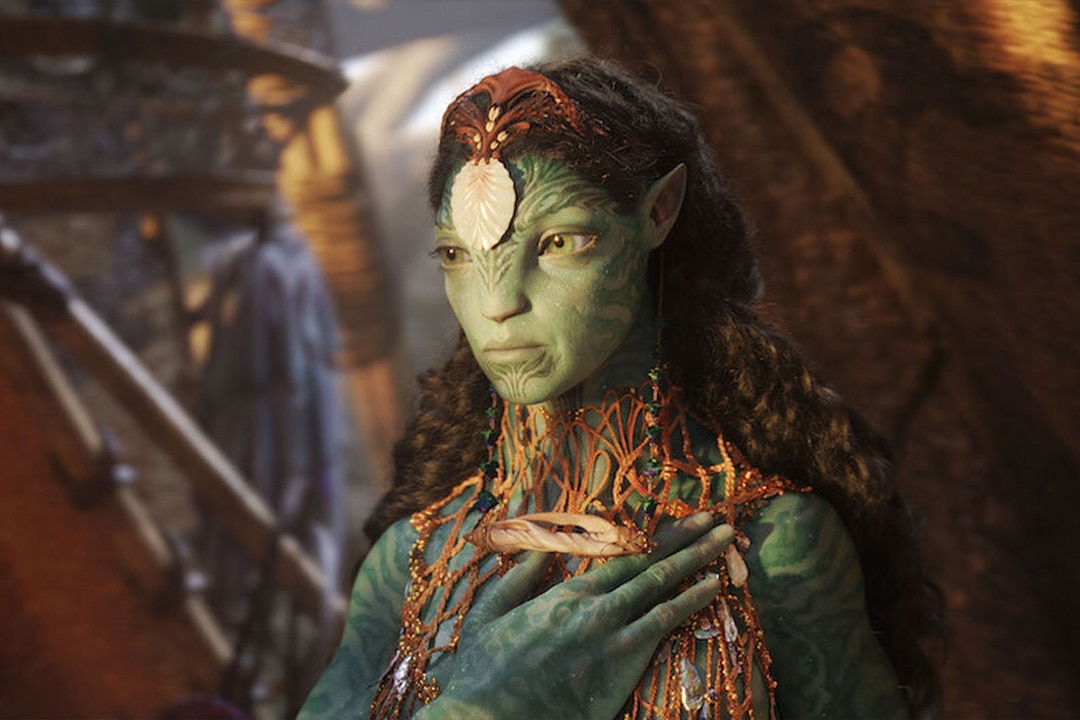Create a free profile to get unlimited access to exclusive videos, sweepstakes, and more!
'Avatar: The Way of Water' animators explain how the ocean Na'vi are different
Avatar's VFX artists explain what went into the creation of the ocean-dwelling Metkayina Clan in the new film.

Returning to Pandora wasn’t easy. The VFX artists and technicians who brought Avatar: The Way of Water to life needed to do more than just recreate the wonderfully strange alien moon that audiences got to know and love in the first film, taking advantage of technological advances from the 13 years between the films. They also had to create totally new parts of Pandora, including gorgeous underwater reefs, astounding creatures, and an entire new subspecies of Na’vi. Creating these ocean-dwelling Na’vi meant paying attention to how they would have adapted to an ocean environment, giving the real-life actors underwater jetpacks, and some (light) clashes with James Cameron.
In The Way of Water, now in theaters, Jake Sully, Neytiri, and their children head to sea, where they must live amongst a clan of Na’vi who are as at home in the reefs and open oceans as Jake and Neytiri are in the jungle and floating mountains. Compared to the jungle-dwelling Na’vi (the Omaticaya) the coastal Na’vi (the Metkayina) are physically different. Dan Barrett, a WETA animator who served as the senior animation supervisor on The Way of Water, told SYFY WIRE that the physicality of the Metkayina was a key consideration.
“There was a lot we had to take into account with animation, in the model, especially. Their shape is quite different,” Barrett, who also worked on the Planet of the Apes films, explained during a press event at the Walt Disney Studios lot ahead of The Way of Water’s premiere. Their lung capacity would naturally be bigger, so their chests are proportionately much larger. They have a nictitating membrane — a third eyelid — that Barrett said can be best seen when characters like Tsireya, the daughter of the Metkayina Clan leaders, emerge from the water. More noticeably, they have wide, fin-like arms that help them swim and stabilize underwater, known as strakes, and a tail that’s “somewhat like a crocodile tail.”
“It’s designed somewhat for underwater propulsion as well as to help them stay underwater for a long time,” Barrett said.
RELATED: How 'The Way of Water's complex ending sets the stage for the future of 'Avatar'
In order to simulate that propulsion when Bailey Bass (who plays Tsireya) and other actors playing Metkayina swam underwater, they needed to wear little jetpacks that would simulate the boost their character’s tails would have provided. That extra bit of momentum gave Barrett and the other animators the movement they needed to turn the underwater live-action footage into the fluid Na’vi motion you see on the screen.
“Between the stroke, they could pulse the jetpack to push them forward more. This was in order for us, in the animation process, to add the tail motion that would be pushing them forward,” he explained, adding that “Jim was very, very specific about the way that they would move.”
The actors playing the Sully family — members of the jungle-dwelling Omaticaya Clan — did not have jetpacks underwater, because their much thinner tails wouldn’t have provided the extra push. However, that doesn’t mean the animators ignored their tails altogether.
“One of the interesting things that you will see if you look closely is that the Sully kids, throughout the film, start to become better and better underwater,” Barrett said. “While that tail is nowhere near as effective as a Metkayina tail, you will see them beginning to get better and better at the way they use that tail.”
The way the Metkayina look and behave is indicative of The Way of Water’s creative process, which had directors, designers, animators, editors, and technicians all working together and involved in the process from the earliest stages, because the film simply would not work unless everybody was on the same page. Wayne Stables, a VFX supervisor at WETA who worked on The Way of Water as well as the first Avatar film, told SYFY WIRE that the look of the Metkayina was a compromise between James Cameron’s vision and the requirements of the animation.
“Jim had an idea for the design of the Metkayina and things like that, but it was really in the work that Dan and the team would do, the performance of how they had to move then adjusted a bunch of those things,” Stables explained. For instance, Cameron might have wanted the Metkayina’s strakes to begin at a certain point of their forearm, but the animators realized that they needed to extend lower, further into the hand in order for the swimming motion and propulsion to read correctly as a visual.
RELATED: The 'Avatar' team saw that 'SNL' sketch and designed a new font for the sequels
“It was probably a bit of a battle for Jim, between his idea of how he wanted them to look like and how they had to move,” Stables said. “It’s quite a big process and it took a while before we hit something that was both his design and the performance.”
The end result, though, is a near-perfect synthesis between vision, artistry, physics, and technology. And yet when you see a Metkayina swim through the ocean on the big screen in stunning 3D, chances are you’ll take all that for granted and see only a being that is naturally at home in the sea. That’s kind of the point.
Avatar: The Way of Water is now in theaters.
Want to watch more James Cameron movies? Stream True Lies on Peacock.


























